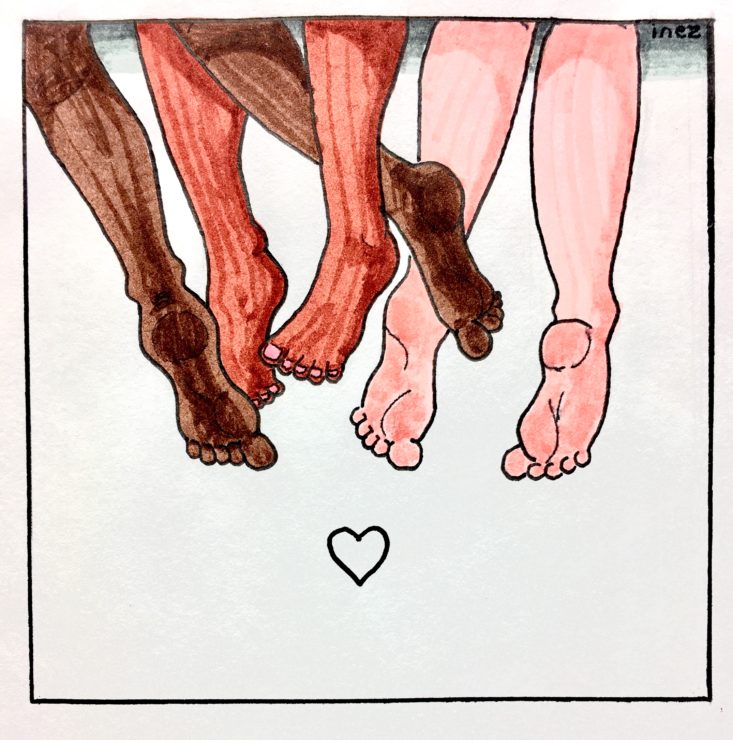What it is and what it isn’t

Illustration by Nat Inez, Graphics Contributor.
Perhaps you’ve heard the term “polyamory” once or twice before. Maybe you know quite a bit about it, or maybe this is your first time reading the word. Whatever the case may be, welcome to Polyamory 101. I’m glad you’re here!
First, let’s talk about what polyamory isn’t. There are a lot of misconceptions floating around, and it’s high-time they were put to rest. Polyamory is not a word for folks who can’t commit; nor is it an excuse to be promiscuous (which is totally okay on its own — it just isn’t the goal of polyamory). It is definitely not to be confused with polygamy (having multiple spouses, usually a man marrying more than one woman).
So, if it isn’t any of those things, what is it?
The word “polyamory” loosely translates to mean “many loves.” I like to define polyamory as engaging in romantic relationships with more than one person at a time, with the consent of all involved. Polyamory is also associated with concepts such as ethical non-monogamy, relationship anarchy, and the open relationship. The key difference is that polyamory promotes the idea of love and romance between multiple people, while other types of non-monogamy may only allow for sexual freedoms.
Polyamory is magical in that it allows us to explore our insecurities and rise above them; to love freely, without fear or the desire to confine one another.
Practicing polyamory is completely different for everyone. I won’t get into specific relationship structures here, but essentially, polyamory can look however the participants need it to look. As long as the consent of every person is established, you’re practicing correctly. Problems arise when our need to be “number one” takes precedence, and our ego begins thinking for us. Polyamorous people experience jealousy, just like everyone else — we simply choose to rely on the trust and communication we have with our partners in order to identify and resolve it.
What most people don’t realize about polyamory is the amount of difficult, personal work that an individual must do to be happy in such a radical form of loving. The world has saddled each of us with deeply ingrained insecurities, and unlearning the unhealthy habits and thought patterns we’ve accumulated can be difficult. For example, many of us have learned that a certain amount of possessiveness is normal in a relationship. In reality, it is a manifestation of self-doubt and anxiety.
Polyamory is magical in that it allows us to explore those insecurities and rise above them; to love freely, without fear or the desire to confine one another.
Though non-monogamy may not be right for everyone, understanding alternative relationship styles may help you to better understand your own relationships.
If you’re interested in learning more about polyamory, here are some of my favourite resources:
The Poly Weekly Podcast: A U.S.-based pod that you can download anywhere you get your podcasts.
polyrolemodels.tumblr.com: The folks at Poly Role Models have multiple social media platforms. They educate on polyamory, as well as raising the voices of polyamorous people of colour.
More Than Two: A Practical Guide to Ethical Polyamory by Franklin Veaux and Eve Rickert: A fantastic (albeit heavy) book that will guide you through everything you need to know.
There are more fantastic resources out there — happy exploring!








